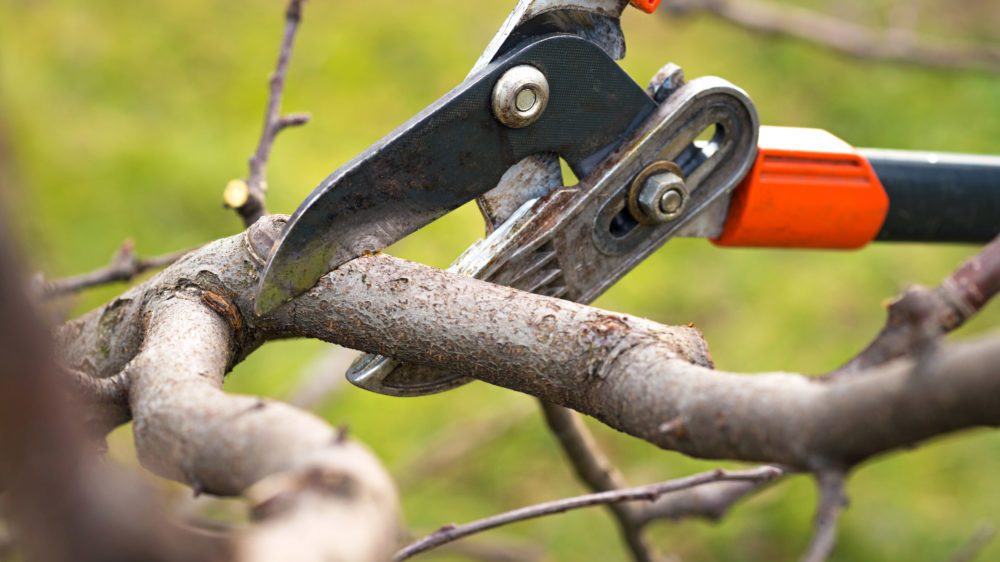
Tree trimming can be a great DIY project, but it’s also important to know when to call in the pros. Here are a few safety tips and tricks, along with a few hints on when it’s time to let the professionals take over.
Reasons to prune. Trees are pruned for three main reasons: appearance, interference with utility lines or buildings, and the health of the tree. Regarding appearance, trees may need trimming to cut away branches that grow inward and become tangled. Branches may also need trimmed before becoming intertwined with utility lines or damaging the roof of a structure. Finally, a diseased limb may need cutting away to save a tree from dying.
When to prune. As a rule of thumb, trees should be trimmed during their dormant season. However, in the case of a tree interfering with utility lines or structures, waiting may not be advisable.
Pruning safety. If a ladder is required, use only the bottom two-thirds of the steps. Wear safety goggles and be mindful of the size of the branches. Make sure you are positioned above any branches larger than one inch in diameter. Follow all safety instructions accompanying chainsaws.
Pruning basics. Limbs that are five centimeters in diameter or less are the best candidates for cutting. Larger branches should be cut only for compelling reasons such as disease or interference with surrounding structures.
Sometimes it is best to thin a tree’s crown, which is all of the branches and foliage extending from the trunk. Inward growing branches become tangled, so pruning them benefits the tree’s health and appearance. Space branches evenly. Do not trim more than a quarter of the crown at a time. Spread additional trimmings over a span of years.
If branches are too low, raise the crown by trimming the lower branches first. Be sure to leave branches on two-thirds of the tree’s height.
If you need to prune large branches, identify the branch collar, which is the slight bulge at the base of the limb where it comes from the trunk. The cut should be made just beyond the collar.
After cutting limbs, most trees do not need a wound dressing. The exception would be for trees vulnerable to diseases spread through insect transmission. In such cases, use latex-based paint rather than pruning sealers or oil-based paint.
Tools for the job. The right tools make the job easier. Hand shears are good for cutting small branches up to three-quarters of an inch in diameter. Hand saws are good for cutting branches over an inch thick and pole saws help you reach high limbs. Chainsaws do an efficient job, but are dangerous. Never use a chainsaw when on a ladder, and don’t reach higher than shoulder level. With breeds prone to disease from fresh cuts, sanitize the blades of cutting tools with a bleach solution before cutting.
Disposal. Check with your garbage collection service or municipality to see if cuttings are eligible for curbside pickup. Limbs will likely need to be cut to a certain size. Follow all rules or risk having your tree limb debris sit for another week.
When to call in the pros. Certain tree-pruning jobs require a professional. Large limbs should not be cut and left to fall uncontrolled. Professionals have tools to guide branches to the ground so they won’t injure coworkers. Branches growing near power lines should also be left to the pros.


